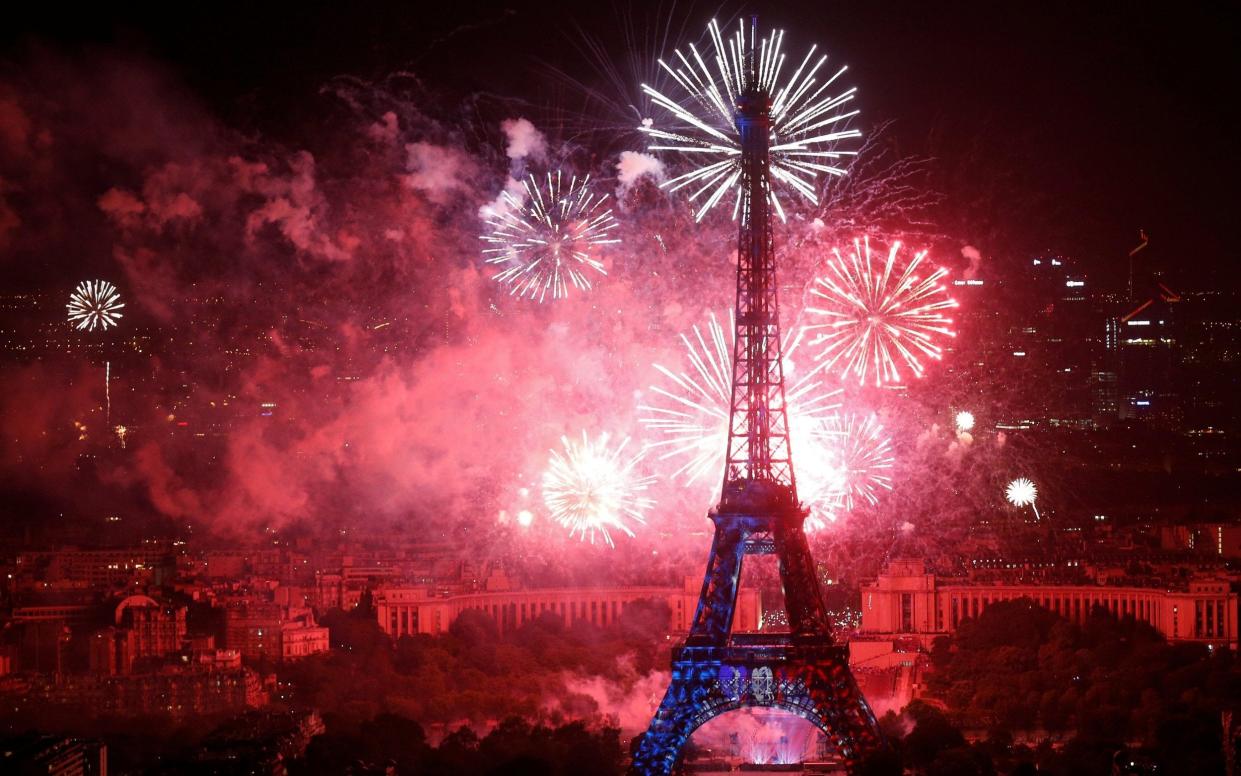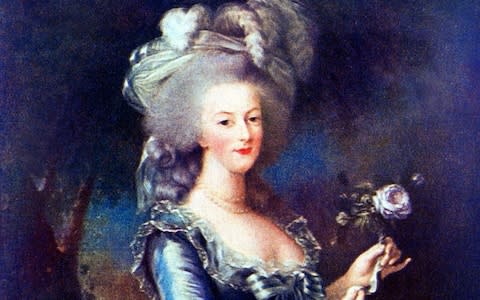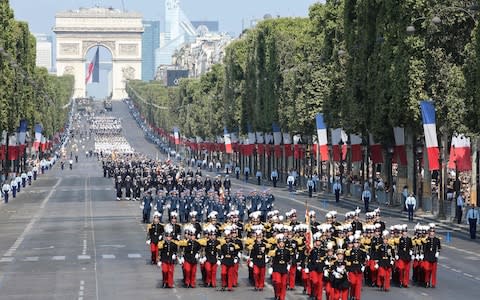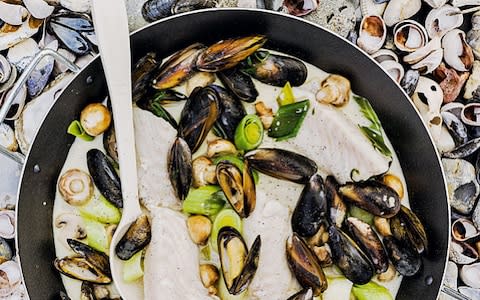Bastille Day 2019: How a prison riot and the Tennis Court Oath overthrew the Bourbon monarchy

When Louis XVI asked a French duke if the storming of Bastille was a revolt on the evening of July 14 1789, the duke replied by saying, "No, sire. It is a revolution."
The revolutionary cornerstones of “liberté, égalité, fraternité” have gained notoriety over the last few centuries, representing one of the most successful rebellions in history.
Yet in just a few years, the French went from a feudal aristocracy to a republic mired by a 'Reign of Terror', paving the way for Napolean Bonaparte's dictatorship.
From how seven political prisoners catalysed the revolution to the rise of a supposedly humane execution device, here is everything you need to know about Bastille Day's origins.
What is Bastille Day?
Bastille Day, which falls on July 14 every year, marks the storming of the Bastille prison by angry Parisian crowds.
This seismic act demonstrated that ordinary people would no longer accept the absolute power of the king and signalled the start of the French Revolution which forced the creation of the modern French Republic.
The July 14 “Fête de la Fédération” - which marked the first anniversary of the storming of the Bastille - became a French national holiday in 1880 and has been observed ever since.
What was the Bastille?
The Bastille on the east side of Paris was originally a medieval fortress built around 1370 to defend the city from the English in the 100 Years War. In 1417 it became a state prison and during the reign of King Louis XVI it was used to hold his opponents, who were often kept there for years without trial.
Revolutionary fervour had been gripping France for at least two years prior to the storming of the Bastille. Simmering tensions over the weak monarchy, persistently high taxes and rising food prices were slowly escalating.
Feudal aristocracy still ruled over the peasants, as it had in the Middle Ages, and ideas belonging to philosophers of the French Enlightenment were beginning to permeate public consciousness.
In 1789, resentment towards the bankrupt Bourbon monarchy reached a new climax when Louis XVI called a crisis meeting of the Estates General for the Third Estate (the common French population) on May 5, 1789 in a bid to raise taxes further.
Furious at the prospect, the Estates General took action and formed the National Assembly on June 17. They took the "Tennis Court Oath" three days later, vowing "not to separate, and to reassemble wherever circumstances require, until the constitution of the kingdom is established."
When a bemused King Louis XVI was told of the drama he asked one of his advisors, “Is this a revolt?” to which he replied: “No Sire, this is a revolution.”
As July arrived, an angry and aggressive mob decided to target the feared Bastille prison, known for holding political dissidents. Although it contained just seven inmates in 1789, it was chosen as a target because it was a symbol of the heavy-handedness of royal rule and oppression by the ruling classes at a time when the poor were starving.
On July 14, 300 revolutionaries surrounded the prison demanding the huge stash of arms and ammunition stored inside the prison's walls. The guards resisted so the attackers surged forward and after a violent battle eventually captured the building, pulling down its walls and releasing the inmates. The governor was also seized and killed.
What happened next?
Revolution - that's what. It wasn't instant, but big changes did happen almost instantly.
In August, just a few weeks after the storming of the Bastille, the National Assembly abolished feudalism and adopted the Declaration of the Rights of Man and of the Citizen as its constitution. This was inspired by the American Declaration of Independence and contained the iconic statement: “Men are born free and remain free and equal in rights.”
In October, Louis XVI and his queen Marie Antoinette, who lived cocooned in their enclave of luxury at the Palace of Versailles on the outskirts of Paris, were removed from their home by 4,000 rioters and moved to the Tuileries, in the heart of Paris where revolutionaries kept watch over them.

After a failed attempt to flee to Austria in 1791, tensions continued to rise between the protectors of the king and the revolutionaries - and among the revolutionaries themselves. This culminated in the storming of the Tuileries by a new mob and the arrest of Louis XVI in 1792.
France was finally declared a Republic in September that year, bringing the 800-year-old monarchy to an end, and in January the following year Louis XVI was executed by guillotine on the grounds of treason.
In the months that followed, thousands of people considered enemies of the new Republic were executed in a "Reign of Terror" - including Marie Antoinette.
In 1799, Napoleon Bonaparte led a coup that wrestled power from the early revolutionaries and in 1804 he became the first Emperor of France. This ended the revolutionary period and the nation entered a 15-year dictatorship under his military rule.

Guillotin's unfortunate legacy
The guillotine was the method of execution developed during the French Revolution. It was the unfortunate legacy of Dr Joseph Ignace Guillotin, a French physician and penal reformer – even though he did not directly invent it.
During the revolution Dr Guillotin was a member of the French Assembly who wanted to banish the death penalty, at that time administered by quartering or on the rack in front of a square full of townsfolk.
In 1789, he proposed that as an interim to banning capital punishment, the penalty should be made swift, painless and private for all classes.
The next year, Tobias Schmidt, a German harpsichord maker, was paid 960 Francs to build a prototype device to fit this purpose. After testing it on animals and corpses, it was first used in April 1792. It later became known as the guillotine and was used to behead thousands of people during the revolutionary era - including Louis XVI.
It was last used in France in 1977, on agricultural worker and convicted murderer Hamida Djandoubi.
How do the French celebrate?
The main event is a military parade in Paris attended by the President of the Republic, currently Emmanuel Macron, who often invites other political leaders.
Some 4,000 soldiers, police, firefighters and various military academies take part in the spectacle on Paris's famous Champs-Élysées. There is also a spectacular flypast involving notably the Alpha Jets of the Patrouille de France. In the evening, fireworks light up the capital from the Eiffel Tower.

In 2018, Singapore's Prime Minister Lee Hsien Loong attended the celebrations alongside Emmanuel Macron, with troops from both Japan and Singapore joining the military parade as special guests.
Elsewhere in France, villages, towns and cities host their own firework displays and dances.
Recipes for a Bastille Day celebration
Asparagus with Breton vinaigrette
A delicious way to serve steamed asparagus, with an oil-based dressing of mustard, capers and fresh herbs.
A classic seafood stew with mussels and white fish, in a light cider and cream broth.

A recipe for the classic French cocktail made with crème de cassis, dry cider and a splash of Calvados.
Pierre Koffman's Bayonne ham tart with garlic, a traditional dish from south-west France.

French bugnes, or Angel Wings, are subtly citrusy and transform into golden, puffed-up diamonds after just a few seconds in hot oil.
Symbols of the Republic
Marianne and the national motto
Marianne is the female figure who since the revolution has symbolised the republic and represents its permanent values "Liberty, Equality, Fraternity".
National anthem
The Marseillaise is the patriotic hymn of the French Revolution, officially adopted by France as its national anthem in 1879.

Flag
The "tricolour" flag is an emblem of the Fifth Republic. It originated around the time of the French Revolution. The white represents the King, and the blue and red represents the City of Paris. The flag is flown from many public buildings and is on display during civil and military ceremonies.
Rooster
The rooster is connected to the Gallic origins of the nation. The Latin word Gallus means both "rooster" and "inhabitant of Gaul". It's now a widely used symbol of France and the nation's footballers have worn jerseys with the bird since 1909.

 Yahoo News
Yahoo News 
